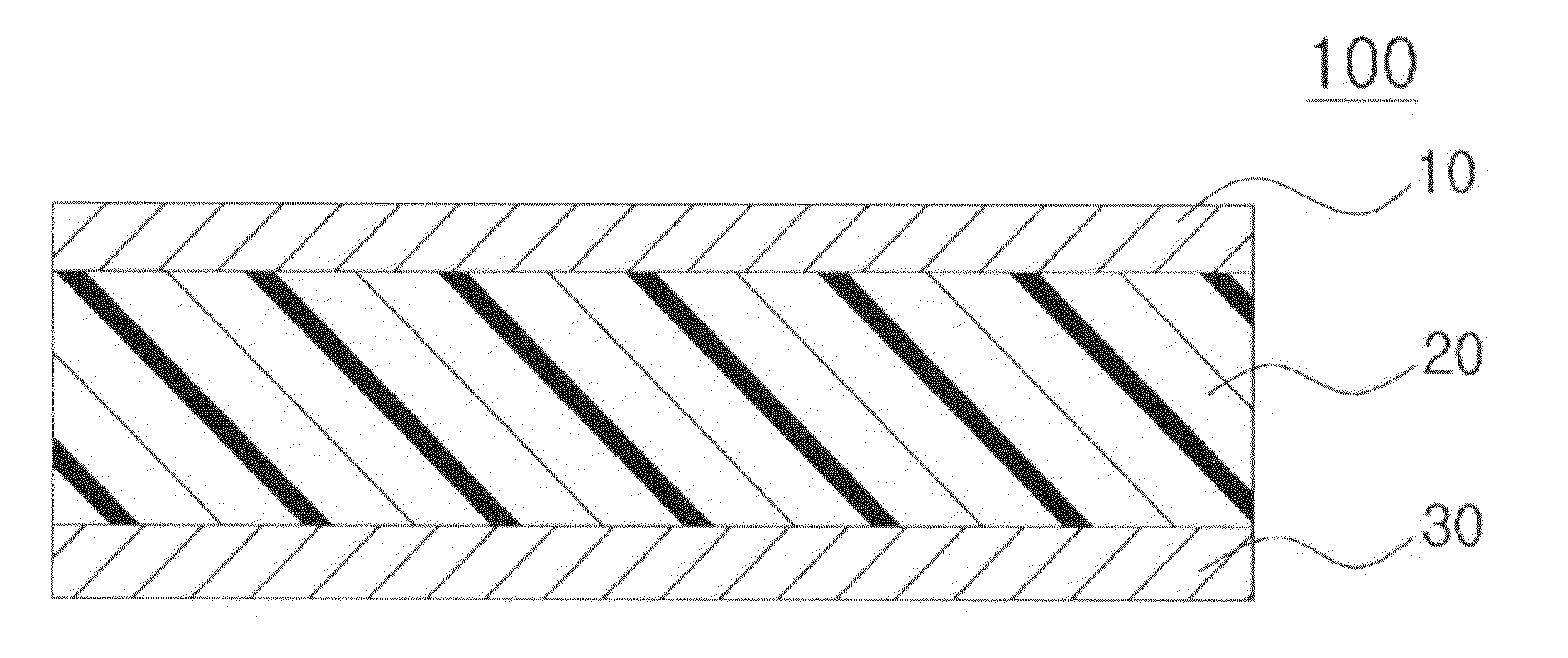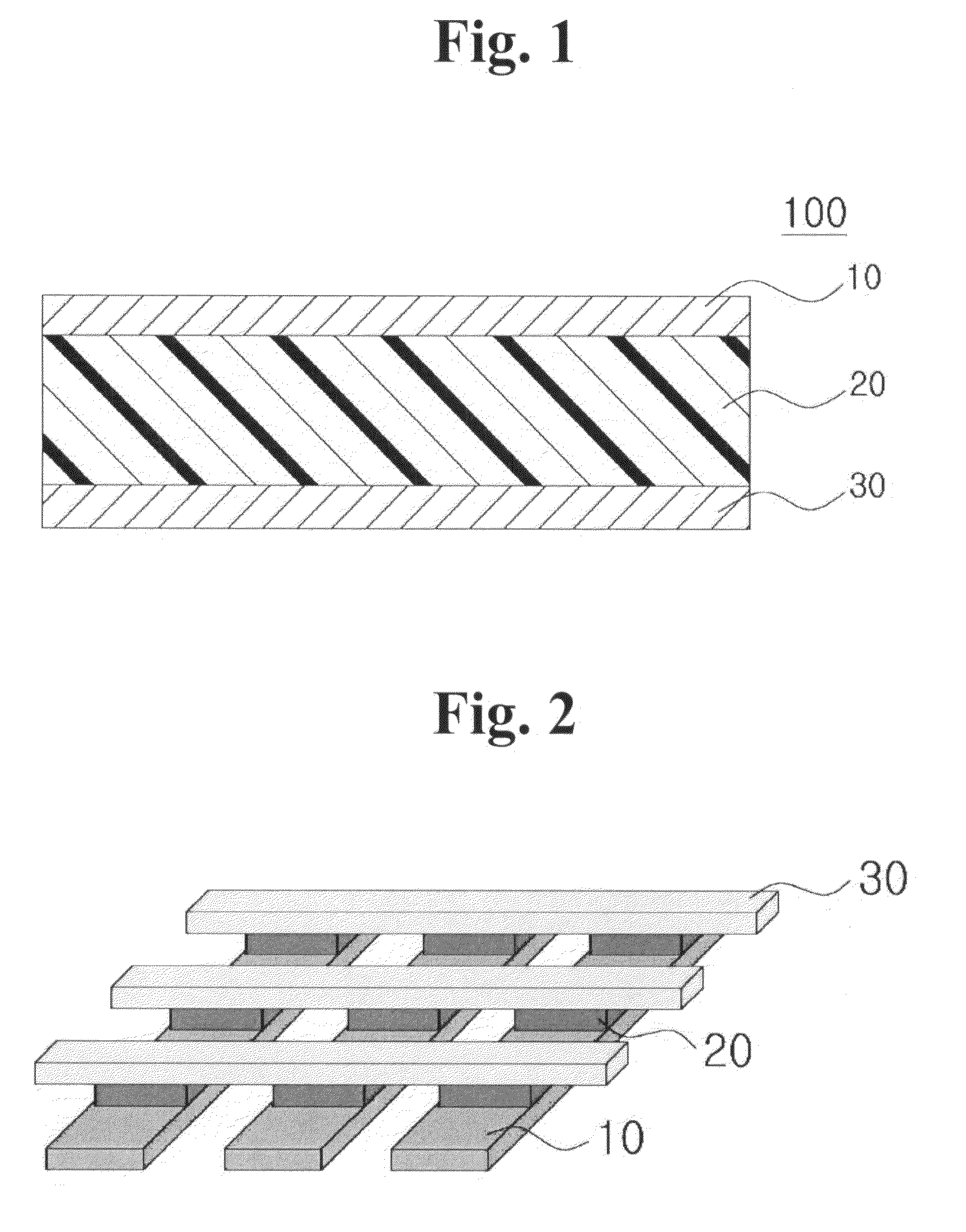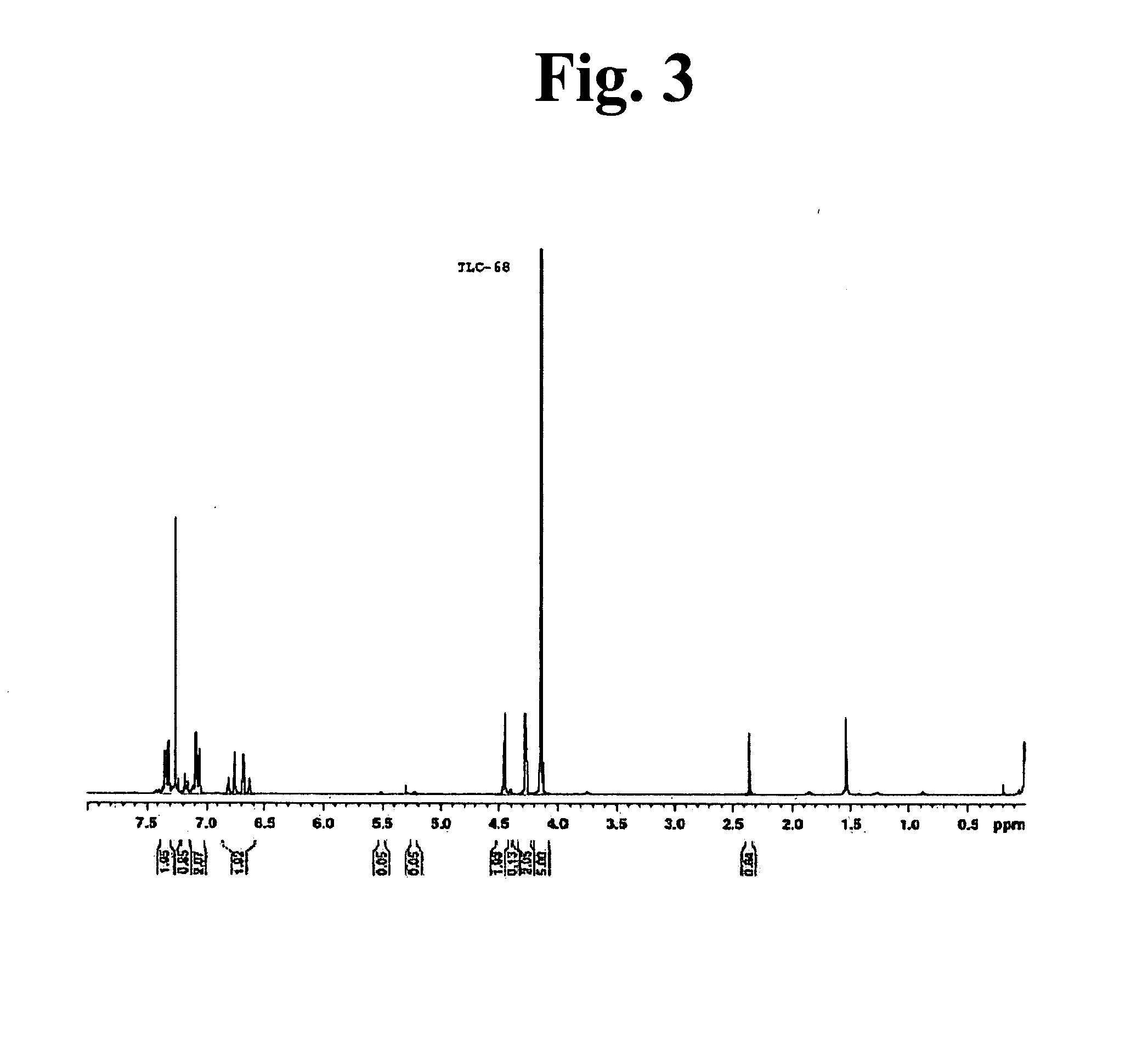Metallocenyl dendrimer, organic memory device using the same and fabrication method of the organic memory device
a technology of organic memory and dendrimer, which is applied in the field of metalocenyl dendrimer, organic memory device, can solve the problems of not being able to use metallocene and its derivatives, the device may be relatively low, and the device is actually unsuitable for nonvolatile organic memory, etc., to achieve the effect of short switching time, improved operating characteristics of organic memory device, and reduced operating voltag
- Summary
- Abstract
- Description
- Claims
- Application Information
AI Technical Summary
Benefits of technology
Problems solved by technology
Method used
Image
Examples
example 2
Preparative Example 2
[0070]About 690 mg (about 3 mmol) of ferrocene boronic acid, about 310 mg (about 0.5 mmol) of tris(4-iodophenyl)amine and about 40 mg (about 10 mol %) of Pd(dppf)Cl2 were placed in a flask. After a reflux condenser was connected to the flask, about 6 ml of toluene as a solvent and about 5 ml (about 1.33 M) of tetraethylammonium hydroxide as a base were injected into the flask using a syringe under a nitrogen atmosphere. The solution was degassed with nitrogen gas, and refluxed in an oil bath. The reaction was allowed to proceed for about 4 days. The reaction solution was diluted with about 20 ml of methylene chloride and neutralized with a saturated aqueous solution of ammonium chloride. The neutralized solution was transferred to a separatory funnel, followed by phase separation. The obtained organic layer was dried over anhydrous magnesium sulfate and passed through a glass filter to obtain a transparent polymer solution. The polymer solution was evaporated un...
example 1
[0071]ITO was deposited on a glass substrate (Corning 1737) having a size about 5 cm×about 5 cm and patterned by photolithography / wet etching. The patterned substrate was dipped in acetone / isopropyl alcohol, ultrasonicated for about 15 minutes, and dried. About 10 mg of the metallocenyl dendrimer prepared in Preparative Example 1 was dissolved in about 1 ml of chlorobenzene (C6H5Cl) by sonication for about 30 minutes. The solution was passed through a syringe filter (pore size: about 0.2 μm) made of PTFE, and spin-coated at about 2,000 rpm on the ITO / glass substrate for about 30 seconds. The remaining solvent was removed by baking the coated substrate on a hot plate at about 110° C. for about 10 minutes to form an organic active layer. The organic active layer thus formed had a thickness of about 50 nm to about 100 nm, as measured using an Alpha-Step™ profilometer. A shadow mask was placed on the resulting substrate and introduced into a thermal evaporator. LiF was deposited to a th...
PUM
 Login to View More
Login to View More Abstract
Description
Claims
Application Information
 Login to View More
Login to View More - R&D
- Intellectual Property
- Life Sciences
- Materials
- Tech Scout
- Unparalleled Data Quality
- Higher Quality Content
- 60% Fewer Hallucinations
Browse by: Latest US Patents, China's latest patents, Technical Efficacy Thesaurus, Application Domain, Technology Topic, Popular Technical Reports.
© 2025 PatSnap. All rights reserved.Legal|Privacy policy|Modern Slavery Act Transparency Statement|Sitemap|About US| Contact US: help@patsnap.com



